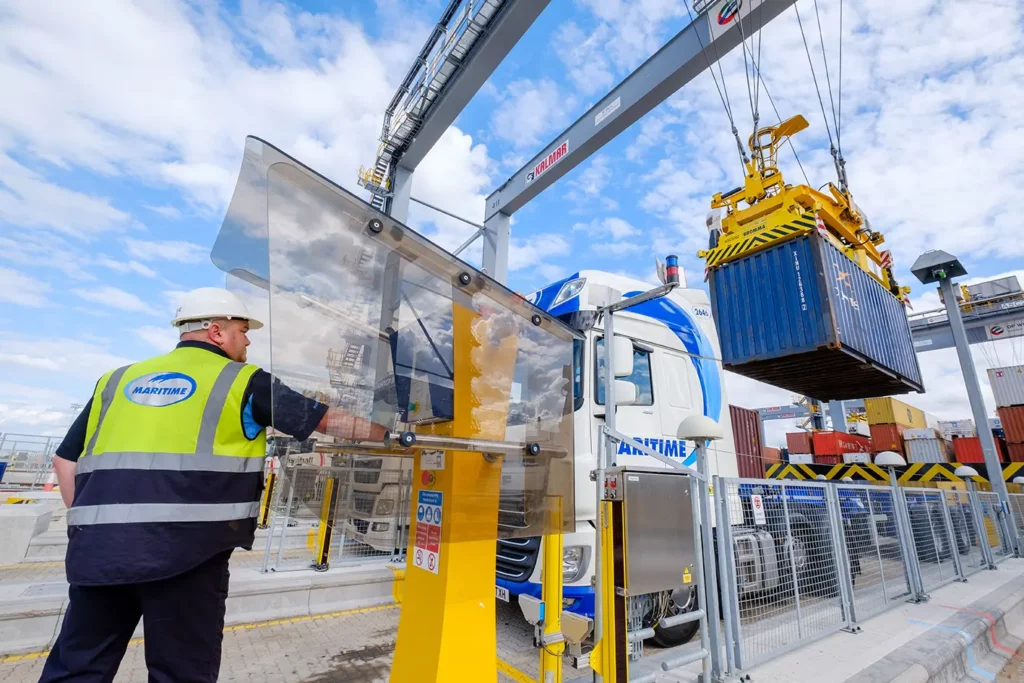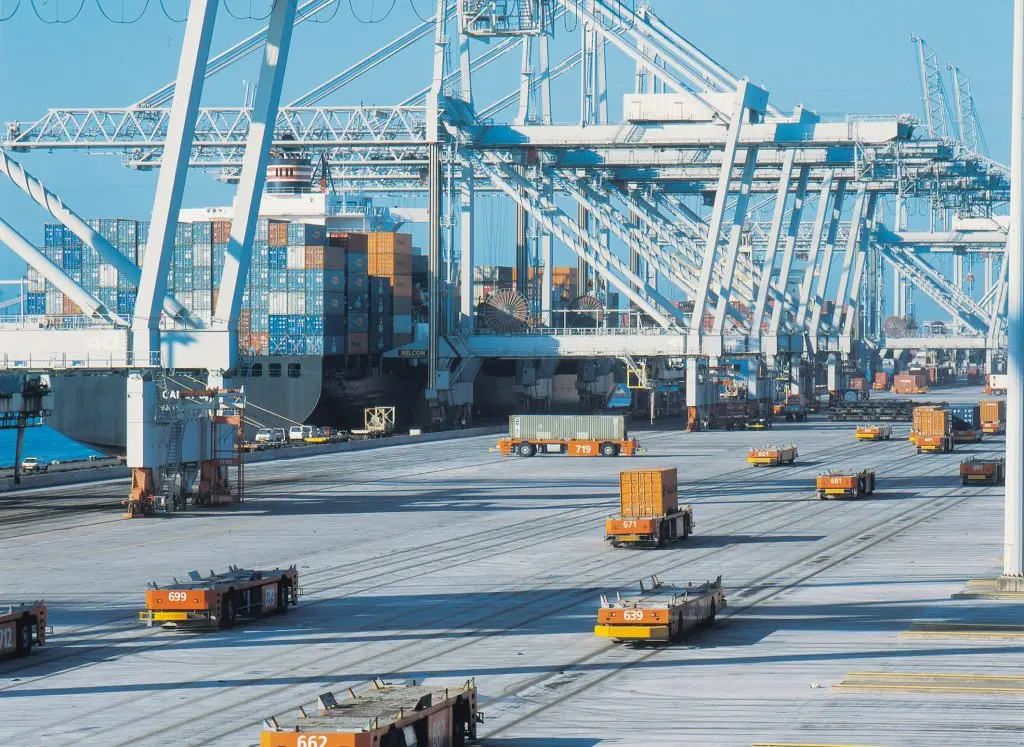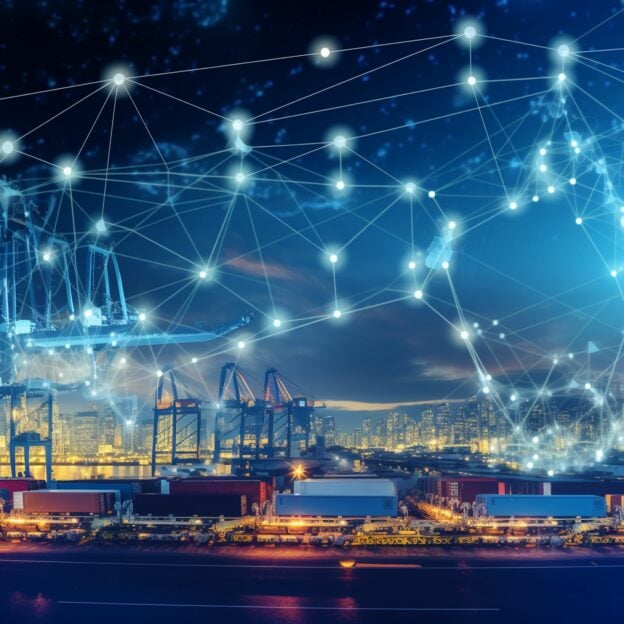Currently, the importance of developing and executing comprehensive maintenance plans to preserve operational efficiency and extend the useful life of seaport infrastructure is being recognized. In a global scenario of increasing demand, ports around the world are constantly competing to attract traffic and maritime routes.
In addition to geographical proximity, the possession of optimal port infrastructure has become a decisive factor in the selection process to carry out work in ports. This strategy has become fundamental to guarantee competitiveness and performance in a globally demanding growth environment, currently the trend is conservation by adopting an integrated approach from the initial project design phase, instead of waiting until the start of construction.
Implementing maintenance-focused engineering practices has become the prevailing tactic to mitigate future conservation requirements, resulting in reduced costs and improved competitiveness.
Automation of seaport maintenance tasks
In port infrastructures, the application of automation in maintenance work is becoming increasingly essential due to the complexity and critical importance of these facilities.
Ports are intricate systems with multiple components essential for their global operation, which requires constant inspection, analysis and exhaustive maintenance. These tasks cover a wide range of activities, such as dredging, maintenance and repair of bollards (an iron or cast steel post that is placed on the outer edge of a dock so that the mooring lines do not hinder passage) and fenders.
Likewise, the conservation of road networks and pavements, the maintenance of the electrical system of port facilities, the maintenance of cranes and loading equipment, the repair of signaling elements, as well as the repair of ports and other structures, such as docks. , docks, walkways and ramps, and the maintenance of submerged structures.
The efficient execution of these automated maintenance jobs are necessary to improve the competitiveness and efficiency of a port, which contributes to improving safety, productivity and environmental sustainability, which ultimately translates into overall operational excellence in port facilities.
The importance of port automation
In the current era, port automation has emerged as a crucial factor redefining efficiency and operability in maritime cargo transportation. Historically, the handling of goods in seaports relied heavily on human intervention, often creating challenges in terms of efficiency and time.
The 20th century marked a milestone with the introduction of container shipping, which revolutionized the industry by offering previously unimaginable levels of efficiency. Despite this progress, adapting to a new paradigm in the industry has faced significant challenges. For decades, cargo handling practices remained relatively static.
However, the situation is evolving rapidly with the increasing implementation of new technologies in seaports. The advent of robotic systems and advanced machinery is fundamentally transforming the way cargo handling and distribution is approached. These advances not only improve operational efficiency, but also present new opportunities to optimize maintenance processes.
Port automation is not only about replacing human intervention, but also about introducing more efficient and precise solutions. The ability of robotic systems to perform specific tasks, along with the use of advanced machinery, not only speeds up operations but also reduces errors and associated risks.
This change not only impacts cargo handling efficiency, but also redefines security and logistics management at seaports. The ability to implement remote monitoring and control technologies contributes to faster and more accurate decision making, improving safety for both workers and the cargo itself.
Ultimately, the importance of port automation lies in its ability to transform the maritime industry, making it more efficient, secure and adaptable to the demands of ever-evolving global trade. The continued introduction of innovative technologies in this area promises a future where seaports are highly efficient and automated hubs, driving international trade towards unprecedented levels of agility and performance 1 .
The implementation of advanced equipment and systems
Automated support vehicles have been developed, such as straddle carrier technology, which makes it easier for the vehicle to autonomously transport, load and unload containers 2 . In an automated container terminal, ship unloading is carried out using an Automatic Guided Vehicle (AGV), with transport speeds between 3 and 6 m/s. This AGV collects the containers directly from the ship using a gantry crane and moves them to the container yard, where it is released by a stacker crane, in a fully automated operation (figure 1).

The move towards automation in seaports not only involves the implementation of advanced equipment and systems, but also the adoption of cutting-edge technologies such as artificial intelligence, machine learning and the internet of things. These technologies allow greater capacity for data analysis, route optimization, operations scheduling, maintenance activity planning, resulting in more efficient management and decision making based on real-time data.
In automated terminals, monitoring and tracking the operation and status of the fleet is no longer simply an additional option, but a fundamental requirement. Without advanced remote monitoring and diagnostic tools , it is impossible to effectively manage the fleet in operation. Additionally, not all maintenance conditions can be detected by automatic diagnostics.
Another important point is the requirement for trained personnel to analyze the performance and condition of the fleet, and thus proactively identify possible maintenance problems and take the necessary measures to avoid unnecessary interruptions in the operation. This analysis goes beyond the skills of the traditional maintenance technician and requires an expert approach.
In an automated terminal, operational and maintenance personnel must be familiar with various computer systems; this aspect must be adequately addressed in the personnel training process. At automated terminals, the system collects and records key equipment availability and performance metrics, which were previously obtained manually for decades.
Maintenance planning in an automated environment
Strategic planning of the operations and maintenance of an automated terminal is a complicated task that involves constant optimization of various variables. A structured approach to maintenance ensures greater availability of equipment, thus increasing its overall effectiveness 3 .
The assistance of knowledgeable suppliers is valuable in optimizing equipment maintenance, allowing terminals to achieve the most important benefit of automation: consistent, predictable performance 24 hours a day, every day of the year.
In automated terminals, rigorous attention must be paid to maintenance at all levels, including the physical design and site layout. A fundamental aspect is the careful definition and strict separation of the areas in which human interaction with automated equipment is required.
This has significant implications for equipment maintenance. Automated gantry vehicles (figure 2), and automated guided vehicles (AGVs) can be operated outside of the automated environment for maintenance purposes.

In order to maximize equipment uptime, these overhaul areas should be located closer to the container area than the maintenance workshops themselves, where machines may be brought in for more extensive servicing or repairs.
In automated terminals, effective predictive maintenance planning generally ensures high fleet reliability, however, it is essential to account for the unlikely possibility of a machine downtime. A common strategy for handling exceptional situations involves segmenting the automated container yard into isolated areas using light curtains or other security measures .
In the event of a machine breakdown, these zones can be closed sequentially to stop automatic operations and then reset once the machine has been removed from the yard, allowing the rest of the terminal to continue operating without interruption.
An alternative is to define a software-based safe zone around the faulty machine, allowing other automated equipment to maneuver around it. At the end of the shift, yard operations are temporarily stopped to remove the parked machine, these measures are necessary to ensure the continued and efficient operation of the automated terminals .
Security systems and access control solutions, critical constituents, demand constant attention throughout the automated terminal.
Beyond automated container handling equipment, the infrastructure encompasses a significant diversity of components that require maintenance, from sensors, security curtains, doors and fences, to wireless networks, LANs, servers and cooling systems, each element demands diligent management. Infrastructure maintenance in automated environments is of critical importance, where security emerges as a primary consideration.
Conclusion
Automation in the maintenance and operation of seaports is important to ensure not only operational efficiency, but also contributes significantly to the security and adaptability of these key infrastructures in global trade. The continued evolution of automation promises a future where seaports are highly efficient and technologically advanced logistics centers, playing a fundamental role in facilitating international trade.
References
- https://www.michiganstateuniversityonline.com/resources/supply-chain/integrating-automation-to-americas-ports/
- De Larrueca Jaime R; “Automated container terminals”; published Sep 30, 2019; https://www.cargoflores.com/terminales-automatizada-conteneres/
- Keskinen A, Annala E ANNALA, Miedema P; “Maintenance of automated terminals”; Published in March 2017; https://www.kalmarglobal.com/startupshowroom/white-paper.pdf

